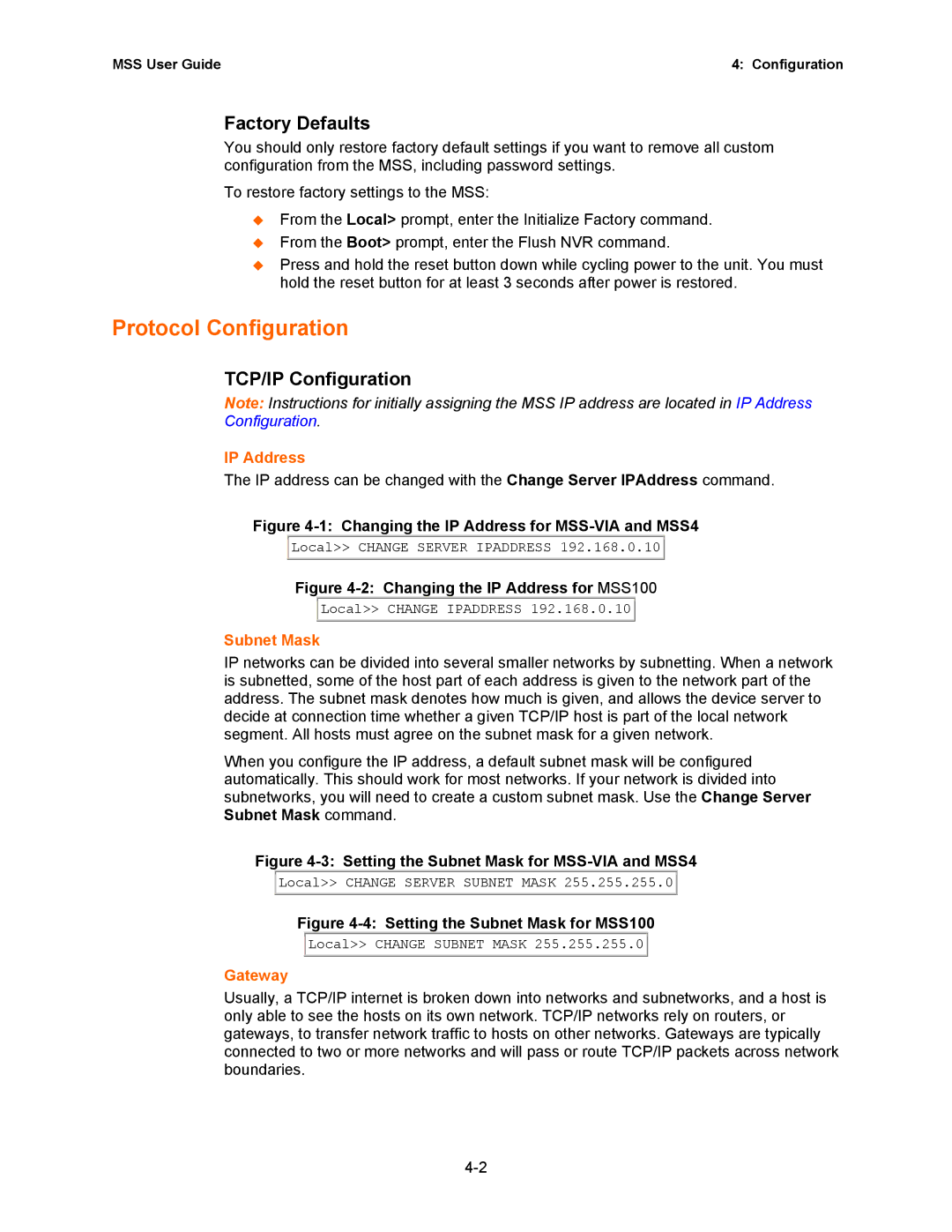
MSS User Guide | 4: Configuration |
Factory Defaults
You should only restore factory default settings if you want to remove all custom configuration from the MSS, including password settings.
To restore factory settings to the MSS:
From the Local> prompt, enter the Initialize Factory command.
From the Boot> prompt, enter the Flush NVR command.
Press and hold the reset button down while cycling power to the unit. You must hold the reset button for at least 3 seconds after power is restored.
Protocol Configuration
TCP/IP Configuration
Note: Instructions for initially assigning the MSS IP address are located in IP Address Configuration.
IP Address
The IP address can be changed with the Change Server IPAddress command.
Figure 4-1: Changing the IP Address for MSS-VIA and MSS4
![]() Local>> CHANGE SERVER IPADDRESS 192.168.0.10
Local>> CHANGE SERVER IPADDRESS 192.168.0.10 ![]()
Figure 4-2: Changing the IP Address for MSS100
![]() Local>> CHANGE IPADDRESS 192.168.0.10
Local>> CHANGE IPADDRESS 192.168.0.10 ![]()
Subnet Mask
IP networks can be divided into several smaller networks by subnetting. When a network is subnetted, some of the host part of each address is given to the network part of the address. The subnet mask denotes how much is given, and allows the device server to decide at connection time whether a given TCP/IP host is part of the local network segment. All hosts must agree on the subnet mask for a given network.
When you configure the IP address, a default subnet mask will be configured automatically. This should work for most networks. If your network is divided into subnetworks, you will need to create a custom subnet mask. Use the Change Server Subnet Mask command.
Figure 4-3: Setting the Subnet Mask for MSS-VIA and MSS4
![]() Local>> CHANGE SERVER SUBNET MASK 255.255.255.0
Local>> CHANGE SERVER SUBNET MASK 255.255.255.0 ![]()
Figure 4-4: Setting the Subnet Mask for MSS100
![]() Local>> CHANGE SUBNET MASK 255.255.255.0
Local>> CHANGE SUBNET MASK 255.255.255.0 ![]()
Gateway
Usually, a TCP/IP internet is broken down into networks and subnetworks, and a host is only able to see the hosts on its own network. TCP/IP networks rely on routers, or gateways, to transfer network traffic to hosts on other networks. Gateways are typically connected to two or more networks and will pass or route TCP/IP packets across network boundaries.
